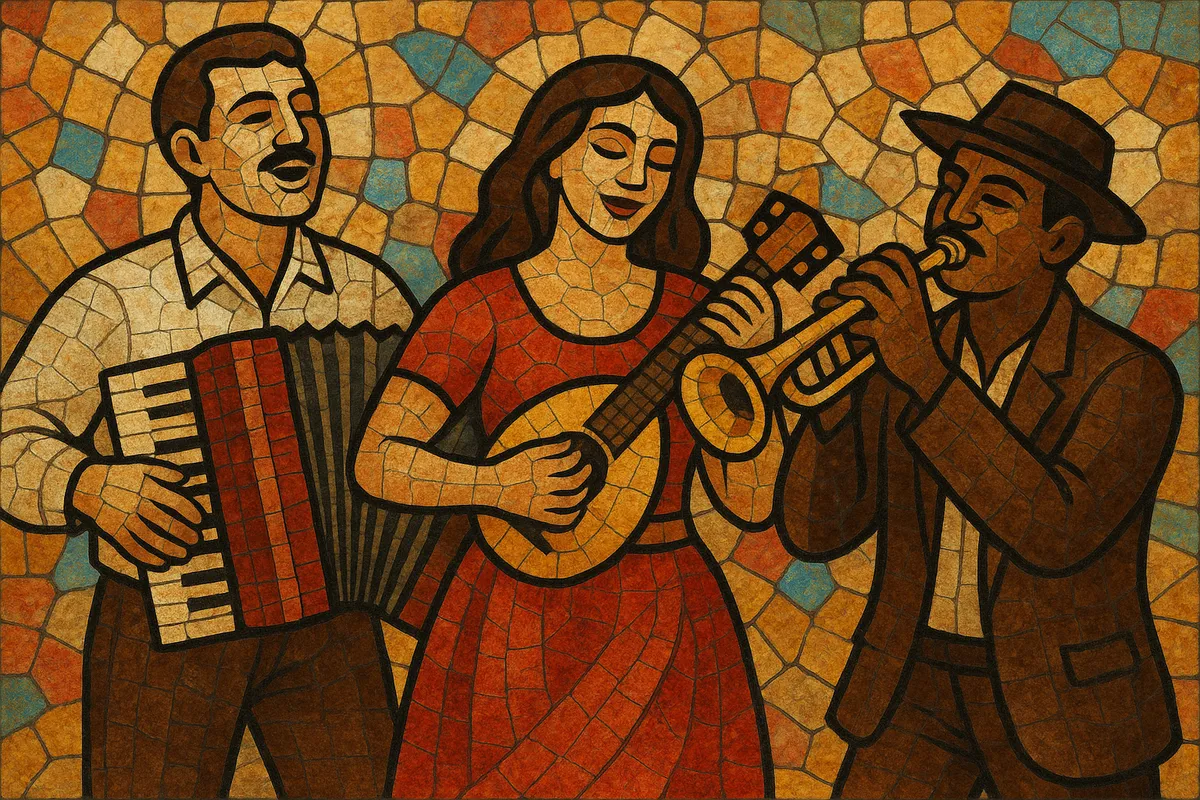Mulatós (mulatós zene) is a contemporary Hungarian party-oriented pop-folk style that blends traditional dance rhythms with schlager-like melodies and modern, synth-driven arrangements.
It is designed for weddings, name-day parties, festivals, and TV variety shows, favoring catchy refrains, simple harmonies, and lyrics about love, celebration, and everyday life.
Stylistically it draws on csárdás and polka grooves, Romani-influenced ornamentation, and neighboring Balkan pop-folk currents (manele, turbo-folk), while embracing affordable electronic backing tracks, accordion leads, brass riffs, and sing-along choruses.
The overall sound is upbeat, danceable, and often kitschy on purpose, balancing nostalgia for older folk and schlager traditions with the immediacy of modern dance-pop.
Mulatós emerged in Hungary in the 1990s as a lively, party-centered update of local dance and folk entertainment. It grew out of long-standing social dance traditions (csárdás, polka), urban schlager and táncdal aesthetics from the socialist-era variety circuit, and Romani-influenced popular performance. As inexpensive keyboards, drum machines, and home-studio production became widespread after the post-1989 media liberalization, performers fused familiar melodies with four-on-the-floor beats and accordion/brass hooks.
The genre’s core sound coalesced through television variety programs, wedding bands, and cassette/CD compilations. Trumpet- and accordion-led arrangements, bright synths, and straightforward verse–chorus forms defined the style. Stars associated with festive events and weekend shows helped normalize mulatós as feel-good entertainment for multi-generational audiences. The repertoire mixed original songs with updated versions of folk and schlager staples.
A new wave of performers embraced Balkan pop-folk currents (manele, turbo-folk) and internet virality, tightening dance-pop production while keeping unmistakably Hungarian melodic turns. YouTube and social media broadened the audience beyond TV, and DJs incorporated mulatós edits into local party sets. Despite periodic criticism for kitsch aesthetics, the style remains a reliable soundtrack for celebrations and a recognizable pillar of Hungarian pop-folk culture.


